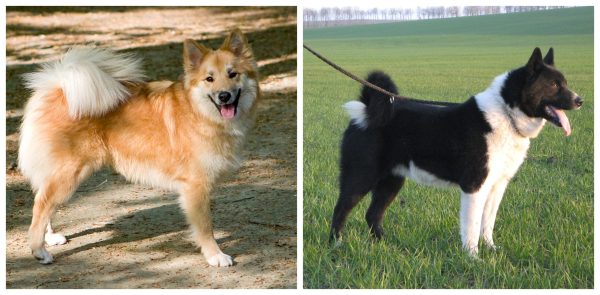
One of these dogs is like the other.
Though the dog at the left is an Icelandic Sheepdog, and the dog at the right is a Karelian Bear Dog, a Finnish breed, blood samples taken from 56 Icies back in 1983 confirmed that they are genetically related. This surprised some people who thought the Icelandic Sheepdog was, well, from Iceland, and it is. (Stefán Aðalsteinsson 2005:9; Stefán Aðalsteinsson 2004:26).
Students of all things dog, however, are well aware that there are often ancestral relationships between different breeds. The Polish Lowland Sheepdog related to the Bearded Collie? The PONS and Beardie related to the Puli? The Puli related to a Tibetan Terrier? They are related. Between the tumult of invasions and occupations, merchant trade, transhumanism, migration, or simply being a ratter on a ship, dog breeds are truly global travelers, and throughout their journeys, they have had “dalliances along the way.
The Karelian actually originated in Russia and was considered one of the “Laika” breeds. Indeed, it was known as the Russo European Laika. The Icelandic Sheepdog’s ancestors may have been brought to Iceland by Vikings in the 9th century, but some cynologists believe they came from Norway because the remains of dogs found in archeological sites in Norway and Sweden resembled the Icelandic Sheepdog. Icies came to Iceland from Norway from the east just like the Icelandic cow, a traded commodity.
Guess who else stopped over in Norway?
Danish and Norwegian Vikings. Some Vikings hung up their horned helmets and chose to settle down after their looting days, but some went back to the sea. Both, however, would have had booty from their pillaging which would have included furs, gems, metals — and dogs.
It’s easy to see how the ancestors of both these breeds would eventually “connect.”
Images: Karelian Bear Dog: Karelski pies na niedźwiedzie sylwetka by Fraczek.marcin shared under the CC BY-SA 4.0 license/Icelandic Sheepdog Alisa von Lehenberg by Veronica Druk
